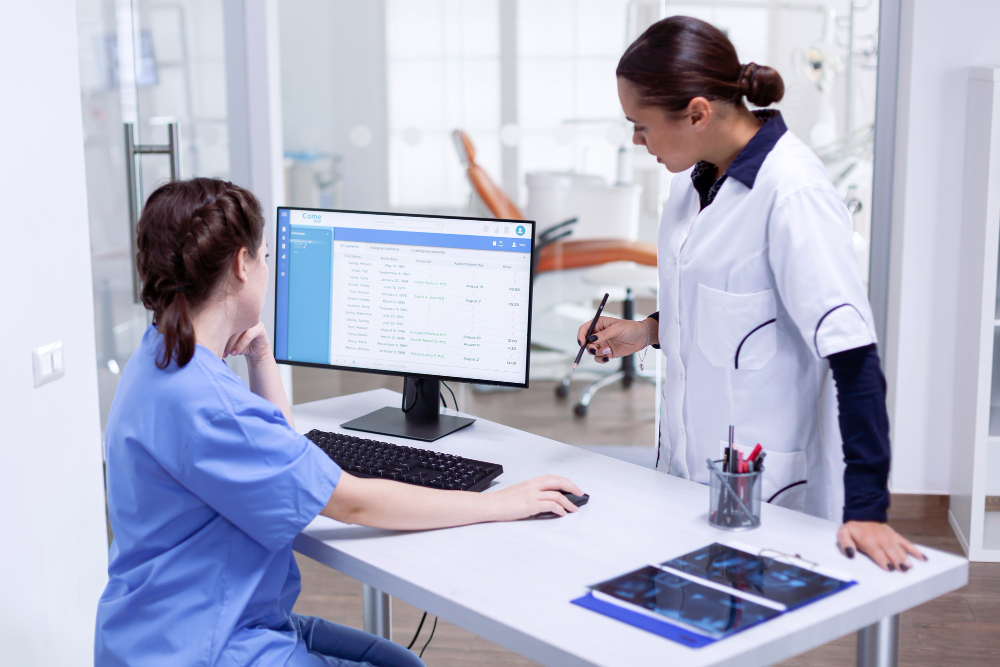So why is an optimized revenue cycle management (RCM) process so important?
Revenue cycle management refers to your practice’s ability to process and accept patient payments in full in a timely manner. Efficient revenue cycle systems can do this with ease, minimal manual throughputs, and diligently and accurately improve revenue.
Numerous responsibilities play a part in getting one claim paid in full to the right payer, let alone multiple claims daily. In addition to properly capturing patient information (or rectifying it), correcting denials, finding active additional coverage, and troubleshooting claims submission processes, executing your revenue cycle is complex and sometimes time-consuming.
Luckily medical billing teams can rely on certain best practices to ensure this system works—and works well consistently
1. Eligibility Verification
One of the biggest hurdles, and most important fundamentals of your revenue cycle process, is eligibility verification.
With each new patient who wants to process a claim, you must ensure that they meet the eligibility requirements, which means that they have active coverage. Without active coverage, you cannot bill their insurance company and must seek full payment from the patient.
Learning about your patient’s health insurance status is important because it will impact how your business should operate. Too many patients not using health insurance present inherent risks to your business’s stability. And not knowing your patient’s health insurance status makes it difficult to collect payments efficiently.
Moreover, patient access is critical with recent changes to MIPS. Patient access expands to include the patient’s ability to access their own healthcare information and doing so will keep you MIPS compliant and improve patient experience.
Since this aspect is so important to a successful RCM, healthcare providers should analyze the patient intake process and make sure that this process is streamlined.
What does this look like?
First, you should be collecting a lot of basic patient information at your first patient intake touchpoint, like patient registration. If you are not scheduling appointments through software like Secure Connect, then your patient intake process is likely happening at the appointment.
At this point, you need Secure Connect software that automates and categorizes this information for you. With an easy-to-use patient intake form, you can accurately and easily collect the necessary patient demographics needed for patient verification.
The right software not only makes this an easy process for healthcare providers, but it also alleviates a lot of the workload. The right software will provide an easy-to-navigate user interface, accurate fields for collecting the necessary information, and synced patient storage information for ease of use.
Good patient intake software will collect patient demographics such as first and last name, current address, and Social Security Number, verifying this information, and supporting coverage search to verify that the health insurance information provided is accurate, and whether the patient is using secondary and tertiary health insurance as well. Without establishing a reliable electronic health record for your patients, then your revenue cycle management system is sure to fail.
This proactive approach minimizes the risk of claim rejections and expedites the reimbursement process so you don’t have to wait as long for payment posting and improves your organization’s cash flow.
2. Claims Submission and Claims Denials
Another key fundamental in your RCM system is the claims submission process. After the patient’s eligibility is determined and the patient receives treatment, the billing team must submit a claim to the right payer with the correct identifiers. Having the wrong medical coding that identifies treatment can lead to claims denials and slow repayment to your business.
Payer rules can be complex. Different payers like Medicare, Medicaid, and private commercial payers will each have their own rules when it comes to code usage and how to submit claims. And, as you likely know, those rules can change at any moment.
Naturally, keeping track of the over 10,000 medical codes is not expected of your staff, but being aware of them and how to find them in your RCM system is.
A small business doesn’t need to hire an in-house claims specialist or compliance specialist just for codes (although those roles would drastically improve your business operations!). Instead, consider a powerful claims submission tool like Secure Connect that can figure out the payer rules on your behalf. This is much easier than setting up a process, training your team, and requiring them to manually sort through codes daily.
Using powerful software like this will make the claims process much easier and ensure that every claim is being sent to the right payer and adhering to the latest requirements.
Secure Connects’s revenue cycle management software can manage this for you. With established payer relationships, we can ensure our in-app guidance aligns with the latest updates, so users can be confident their claims are created according to each payer’s rules, every time.
3. Workflow Automation Using RCM Technologies
Workflow automation is on the rise in the healthcare industry as a whole. By adopting automation and RCM technologies now, your healthcare business will stay ahead of the curve.
Workflow automation is a very easy and common way to improve revenue cycle management. And with the introduction of tools like Secure Connect, the decision to increase your use of automation and technologies should be a resounding yes.
Consider implementing automation during patient access, claims submission, claims denial management, patient payment collections, and more.
When automating patient access, consider implementing a coverage discovery tool that allows you to search for all active payers at the same time, replacing the necessity for individual payer inquiries.
During claims submission and denial management, group claims by type of payer or assign them to a specific biller. This can organize claims in a more manageable way, improving overall efficiency.
For patient payment collections, the right technology tool can create templated patient statements and send bills by email and standard mail, again, drastically improving efficiency and workflow. This increased efficiency allows for improved patient care, as energy and focus can be shifted away from administrative tasks and concentrated on addressing patient needs.
Harris Secure Connect can improve your technological labor through enhanced RCM practices, helping organizations minimize revenue leakage, alleviate administrative burdens, and achieve heightened operational efficiency.
- Automated follow-ups for patient collection
- Offers revenue cycle analytics
- Links to existing patient electronic health record information
- Read, manage, and report on numerous EDI transactions
Secure Connect can manage EDI transactions and ensure the quickest access to both the payer and payment. Most clearinghouses send EDI transactions once per day, but Secure Connect accelerates claims processing by connecting to payers multiple times a day.
4. Improved Payment Options and Payment Verification
As a healthcare provider, you have to do more than just provide healthcare treatment.
Optimizing your claims submission and handling process is important. But like most businesses, healthcare organizations need to consider their patient use cases in their billing process; improving this will enhance patient satisfaction and patient experience.
Patient financial responsibility is a significant amount of the reimbursement potential. Patient responsibility usually includes things like their coverage co-pay or paying additional money to offset any balance not covered by active coverage. Either way, it’s up to medical billing teams to capture patient payments.
To enhance patient convenience, healthcare organizations should diversify payment methods, accept credit cards, and facilitate online payments.
In many cases, not implementing payment options can equate to lost revenue. Consider your current setup in terms of accepting credit card payments, debit card payments, cash, check, and other forms of electronic payment like touchless payment or Apple Pay. It may be wise also to implement payment plans or any other types of support payments.
Offering diverse payment options, such as Secure Connect’s Electronic Remittance Advice (ERA) which automates payment verification, can do this while significantly reducing manual efforts and expediting the reconciliation of accounts.
5. Conducting Regular Audits and Educating Staff
With the implementation and improvement of any of the aforementioned items come regular monitoring and ongoing improvements. Auditing your system, checking for process failures, and continually educating your staff are fundamental to this entire process.
Continuous training for your staff is integral to an effective RCM.
Doing so will equip them with a comprehensive understanding of the software intricacies, key performance indicators (KPIs), and the latest industry best practices. Well-trained staff play a crucial role in contributing to accurate billing, minimizing errors, and enhancing overall financial outcomes.
This ongoing investment in staff development ensures that your organization operates optimally, efficiently, and effectively in its revenue cycle management.
Additionally, you’ll want to consider conducting occasional assessments of your RCM process to keep your organization’s financial health in check. Through regular evaluations, you can identify areas for improvement, maintain compliance with industry regulations, and optimize workflows.
This approach proactively addresses inefficiencies and ensures peak revenue cycle management performance in a dynamic healthcare landscape.
Remember: regular assessments are a strategic tool for continuous improvement, promoting financial stability and success.
Revolutionize Your Revenue Cycle Management with Secure Connect
Every healthcare organization needs effective revenue cycle management. Easily and effectively revolutionize your revenue cycle management process with Secure Connect.
Harris Secure Connect stands out as a trusted and flexible clearinghouse platform. Secure Connect’s history as a revenue cycle management company. They can quickly respond to payer changes with efficiency and timeliness.
Tailored to cater to a diverse range of healthcare setups, from sizable multi-location management systems to small single-doctor practices, Secure Connect ensures a seamless and streamlined experience between the practice management system and the clearinghouse.
Contact us to explore the transformative power of strategic RCM practices with Secure Connect further.










